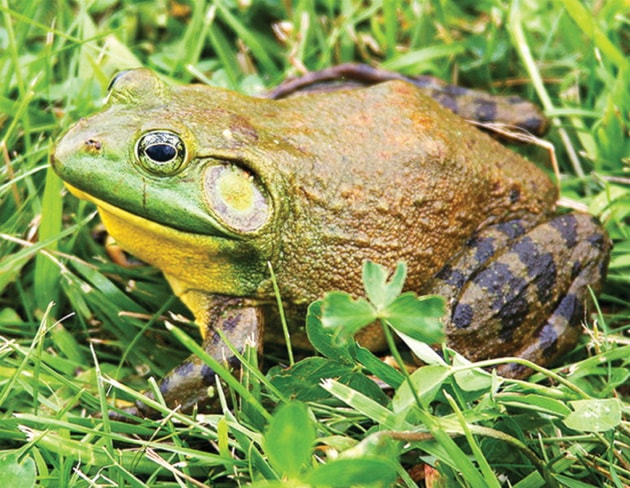By Alex Cooper
BLACK PRESS
The Columbia Shuswap Invasive Species Society is warning people to be on the lookout for the American bullfrog, an invasive species that is spreading rapidly across British Columbia.
“While many frog populations are in decline worldwide, the American bullfrog (Lithobates catesbeianus) has been spreading rapidly in B.C. and outcompeting (or eating) other native frogs and animals,” the organization wrote in a news release.
The American bullfrog is native to eastern North America but was introduced to the western United States through human interaction. According to CSISS, bullfrog farms were established on Vancouver Island in the 1930s in an attempt to market frog legs. Frogs released from those farms are thought to be the source of the bullfrogs invading the B.C. mainland.
They were also imported to B.C. for use in aquatic gardens and as pets and eventually found their way to wetlands from ponds and aquariums.
“In this new environment, bullfrogs are lacking their usual predators (like snapping turtles) to keep the population in check,” says CSISS.
Bullfrogs are the largest frog in North American, reaching up to 20 centimetres in length and 800 grams in weight. They have smooth skin without warts, the males have yellow throats, and they have large circular eardrums behind the eyes. Their size and strength make them great competitors and they often can defeat native amphibians when competing for food and territory.
The eat almost anything they can, including native amphibians, fish, fish eggs, rodents, snakes, turtles, songbirds and ducklings. They are considered a threat to several species of native frogs, including the western toad, Pacific chorus frog, Columbia spotted frog and the Northern leopard frog (which is endangered).
“There is evidence that new or increasing bullfrog populations drastically decreases native frog populations,” says CSISS.
If you see a bullfrog, contact CSISS at 1-855-785-9333 or info@columbiashuswapinvasives.org.
